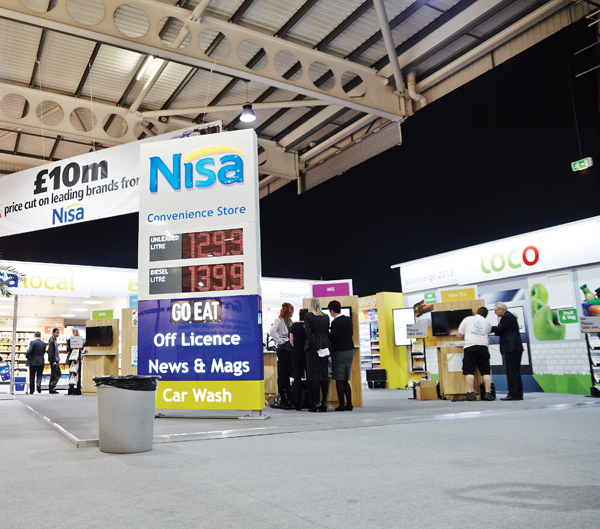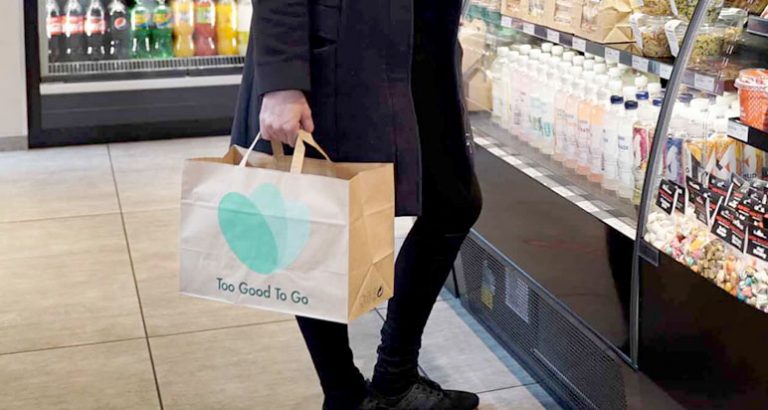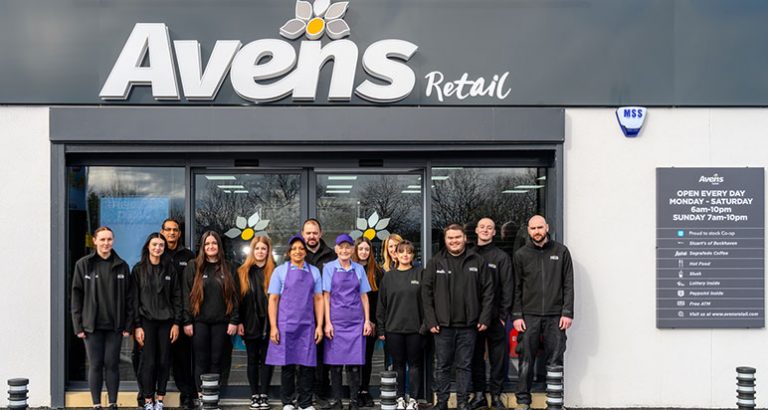Following Costcutter’s decision to end its distribution agreement with Nisa, Chief Executive Neil Turton used Nisa’s exhibition last month to encourage members to make Nisa work harder for them – SLR spoke to him to find out more.
by Kevin Scott
In the heart of the Midlands countryside, Nisa members from around the UK gathered for the organisation’s annual exhibition and awards dinner last month. Coming just weeks after the news Costcutter would be ending its distribution agreement from June 2014, much talk was on how Nisa would make up that predicted £500m shortfall. Chief Executive Neil Turton was bullish, however, in his calls for members to help fill that sales gap. At the awards dinner he declared that “the elephant in the room isn’t actually that big”, and that if members bought more from Nisa, there could be an additional £300m spent through the business.
The morning after the awards (which saw highly commended gongs for Iain Wilson in Dundee and Joanna Giacopazzi in Milnathort), SLR met up with Turton to discuss Costcutter, the direction of Nisa and the future of the convenience industry.
Nisa has had a good start to the year – Costcutter news aside. There’s been a 1% sales growth and 3% volume year-on-year to the end of February, with January and February figures at +3% and +8% respectively. This is partly down to the organisation being ahead of its “fairly cautious” business plan, and additional promotions being offered as a result. Turton says: “In November we realised we were 4% above our plans so that means we’re making more profit than expected. Now, there aren’t too many chief executives who get in bother for making too much profit, but I’m one of them, so we put a lot of money into deals in Q1. That’s Nisa’s way of ensuring that any money we make above budget drops down to our members. It’s a unique part of the Nisa model.”
And an attractive one if recruitment numbers are anything to go by. In March, Nisa revealed it had brought on board 245 members operating over 520 stores since April 2012, though as Turton points out revenue growth has been slower than in recent years. “We’re beating ourselves up a bit at the moment because there’s less than historic growth. In the years I’ve been in the job (since 2006) we’ve grown an average of 7.2% so I’m apologetic sometimes about 3-4% but actually in today’s climate, suppliers are saying that any growth is good.”
Turton says that next year’s results will be even better because as it looks to boost revenues before the Costcutter arrangement transpires, its biggest customer will still be part of its business during this neat year. “Despite all the talk of Costcutter they are with us until June 2014, so that’s another 16 months of trading. And even then, we don’t know, and they don’t know how many of their retailers will chose to follow them, or chose to stay with Nisa.”
The beginning of trials with McColl’s could lead to an additional £200m in revenue, which would leave £300m to make up for the predicted shortfall from losing Costcutter. And Turton believes that sum can be gained from existing members. “From studying EPoS data, and we can measure what our members sell and what they buy there is still a thriving cash and carry industry, especially in cities like Glasgow so some of the tactical initiatives that Nisa is working on are clearly designed by the trading team to make us more competitive in areas where members would have bought outside Nisa.”
He also believes that the loss of Costcutter will strengthen the bond between the group and its members. “One thing that unites the organisation is when there’s a major issue. When Bibby tried to buy us out in 2009 and we rejected the bid, it’s probably the easiest time I’ve had managing the organisation because for once, everyone agreed with me. The mood of the Nisa members is quite confident over the Costcutter situation. They didn’t like the feeling of us having one dominant customer, because the organisation is based on equality. In a way members have got what they wanted, so it is not unreasonable for me to ask them to deliver the upside of that back to the organisation.”
That means spending more with Nisa and filling that gap. “We think conservatively there is £300m out there and our business plan allows for a four year build up to £300m incremental sales from members.”
This figure doesn’t include new members and Turton is confident many Costcutter retailers will stick with Nisa. “Some Costcutter retailers will stay, I presume about a third of them, so on in three to four years time we expect Nisa to have grown to £1.9bn, having managed the exit of Costcutter in whatever form that takes. It’s slower growth then we’re used to, but it’s growth.”
Turton admits that suppliers could deal with members directly, “so the fact Nisa does exist is by consent: we operate a very efficient route to market and members can see the benefits of the aggregated scale. It’s important we keep that confidence and explain all the time the underlying benefits of the business model and why it’s different.”
He is also set to have more time to concentrate on developing Nisa’s business after the appointment of Amanda Jones as COO – the first time Nisa has had an executive in that position since Turton himself was promoted from COO to CEO in 2006. Jones will look after the day-to-day running of the business, allowing Turton to dedicate more time to “strategic direction”.
Symbol growth
So Nisa will continue do what it does long after P&H lorries arrive at the doors of Costcutter retailers. The organisation feels it is ready for the next era of its existence, and that is one where its symbol offering is growing stronger. At the moment 35% of sales go through Nisa symbol stores, with Turton predicting this will rise to 72% by 2018, though the loss of the Costcutter business has a bearing on those numbers.
Around 20% of the group’s business comes from unaffiliated retailers, a group Turton says is hugely important, even if they’re not discussed as much as their fascia carrying cousins. “If you bang on about symbols all the time, because that’s where the growth is coming from, then you create the impression that’s all you talk about, but one of the unique things about Nisa is that we ask new members what they want to do, trade under our name or their own. We don’t want to be obsessed with the symbol group. We have put a separate focus on our independent members internally and we’ll be executing some changes to create a business unit for that.”
Calling it a “significant minority”, Turton predicts that 20% will fall to 10% in five years as more retailers take up a symbol. “It remains significant and we’ll continue to have a focus on it. We’ve done best indie fascia award for the first time this year and that’s in recognition of the fact it’s a business unit in its own right.”
When it comes to new recruits, the strategy going forward is to focus on value and not volume. “Next year’s target will be lower because we want to focus on higher quality recruits so in terms of new members I want the shift away from high numbers to significant quality,” says Turton. “It’ll be a soft target for the sales teams in terms of numbers, but a challenging one in terms of size of turnover we expect members to have.”
The Loco offering is expected to help add to this growth next year. Aimed at retailers with stores under 1,000 sq ft, Turton says 70% of all recruits to Loco have been unaffiliated so looks at it as an “upgrade” from strict cash and carry. However of the 57 stores opened so far, only two are in Scotland.
Refinancing
Nisa recently announced a refinancing agreement with Barclays to ensure the long-term financial stability of the business. Turton says: “It sends a message about our strong security, it gives us the financial foundation we need, some of which means we can do more for members. For example, we’d like to see members be able to come to us for financing for refits. That’s something we are looking at.”
As Turton explains, historically that sort of credit could be obtained from banks, but with that now increasingly difficult retailers are turning to their trading partners to support them more. “This is about our foundations being rock solid. The key value of that to me is Barclays were so upbeat – saying we were a great business with great management. That’s golden for Nisa as you don’t often get banks being gushing, especially Barclays.”
So, despite the loss of its biggest member, there is a clear plan for life without Costcutter, and with the current success of the sector, the plan to make up the shortfall seems entirely reasonable, albeit highly challenging. One of these challenges comes from Tesco’s plans to franchise its One-stop model. “Tesco moving into franchising is potentially very interesting”, says Turton. “However, running a franchise is not really an independent business, but you can imagine it being lucrative given Tesco’s buying power. It doesn’t necessarily mean bad things for independents, but it means we need to make retailers realise they have to be even better. When Tesco first came along into convenience the standards of independents took a quantum leap because retailers realised they had to become better. The independent community can always run better stores but they need to remember the required standards are getting higher and higher. Expectations are completely different to how they used to be.
“The mults are running good convenience stores so it will be survival of the fittest for independents and inevitably that means some will fall by the wayside. What I need to do is ensure that Nisa is the natural home for good entrepreneurs. That’s why we don’t have franchise model; we make money for you, not out of you. Multiple implement the same strategy in every store, so we have to allow retailers run their own local businesses, while backing them up.”
Loco steams ahead
Upping the offer
One way Nisa is encouraging growth is by altering its offering. Loco was introduced for smaller stores, while Nisa Extra is available for retailers with larger premises. Over the next year, there will be a push on all fronts – including forecourts, following Nisa’s deal with Greenergy, that allows it to offer an own-brand fuel offering.
In Scotland, Nisa has a team of four that Retail Development Director Raj Krishan (pictured below) says is working hard to grow the business. “In the last 12 months there’s been a lot of development in Scotland,” he says. “We could always do more though and we’re striving to do that. We’re confident in our offer, what we can bring to retailers. There are a lot more smaller stores out there so the advent of Loco really opens up the market for us.”
Two of the 57 stores are in Scotland. Raj admits this ratio isn’t great, but is confident that with the package and operating team they can push that harder in Scotland. “We took time to make sure the Loco offer is fit for purpose in the market we’re aiming for. That’s wasn’t just looking at the business between Nisa and the retailer, but also the retailer to the shopper – so ensuring there was the right space given to each categories, the right ranging, promotions and so on. We can deliver on this now.”
Its forecourt offering is more intriguing. With supermarket forecourts driving many local businesses to closure, Nisa is investing in the area. And that requires a more detailed understanding on the market. “It’s an area everyone thinks they understand but they don’t,” says Krishan. “Things are changing. You have all these different offerings in convenience while a forecourt was always just a ‘forecourt’, but actually it isn’t.”
Krishan says Nisa has identified three distinct models: there are forecourt stores that are low on fuel and high on top-up shopping; those that are more reliant on fuel with a heavy lunch and impulse offer; and lastly, a hybrid of both these models.
“Operators that approach a forecourt by simply saying ‘it’s a convenience store’ end up with dead space being warmed by products that won’t sell. By understanding the sector and its shoppers, ultimately you can determine your layout, and then your range, so you can set up with products that will sell in the right space. We get that now. More importantly we have a simple tool that can deliver that and help members range their store accordingly.”
Krishan says retailers must also interact differently in terms of communication. “If you drive into a forecourt you’ve got dead time while you fuel up, so how do we use that time to communicate? How are we going to trade people up in store? We’ve researched and we understand that now. We have it in place, communication, promotions, ranging, space, food-to-go.”
After that it becomes about fuel itself. “Fuel is an area where our members are being kept awake at night. It’s thousands of litres a week and they’re not getting rich on the back of it and the contracts on offer aren’t as clear as they could be, so retailers may not get what they’ve signed up for, so we’ve come up with a transparent fuel offer in our partnership with Greenergy. What they’re big on is service and being able to deliver the product in a transparent way. Add to that Nisa branding which is easy for customers.”
Retailers can still have any fuel supplier of course. Krishan says: “Compare it, contrast it, if it doesn’t work stick with what you’ve got and we’ll do the store. But we can provide that alternative. We think it’s right for our members and the sector. We believe it’s the future. You have a perception about a store based on the oil sign. In the US, a gas station will have the name of the store more prominent; they’re not precious about the fuel supplier. We believe that that’s how the market will migrate in the UK.”







